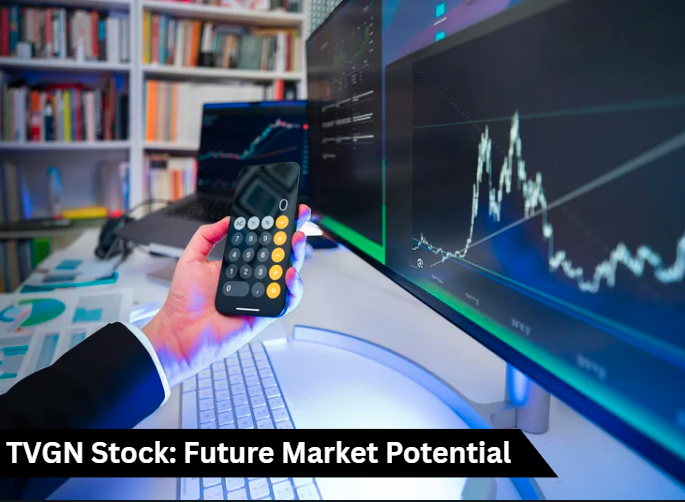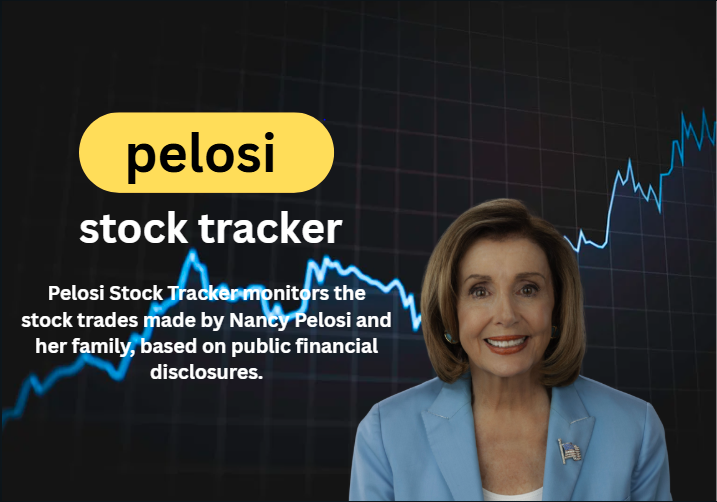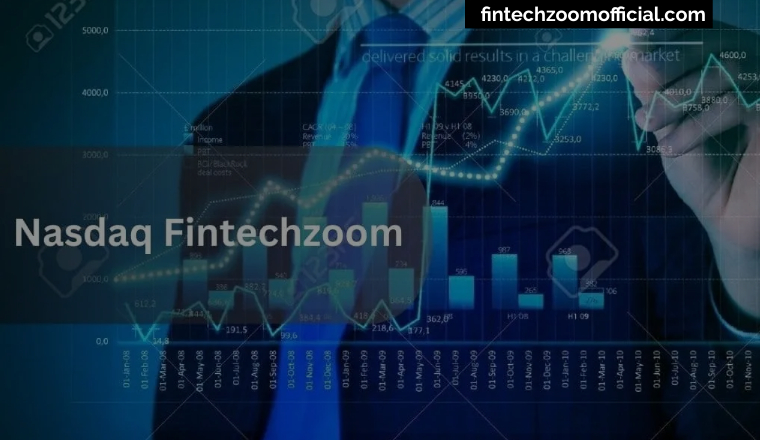FintechZoom.com | Your Gateway to Financial Insights
- Home
-
Stocks Updates
- News
-
Finance Tools
- Crypto Profit Calculator
- Savings Goal Calculator
- Compound Interest Calculator
- Currency Converter
- Tax Calculator
- Retirement Planner
- Net Worth Tracker
- Investment Portfolio Calculator
- Credit Card Payoff Calculator
- Monthly Budget Planner
- Mortgage Affordability Calculator
- Debt-to-Income (DTI) Ratio Calculator
- Fuel Cost Calculator
- Stock Return Calculator
- Loan EMI Calculator
- Latest Blogs
- Jobs Updates
How Nvidia Got Trump to Greenlight AI Chips for China
Table of Contents
A little flattery, a little strategy—how Nvidia’s CEO pulled off the China chip
reversal with Trump.
When Donald Trump says “no,” most companies brace for impact. Nvidia’s
Jensen Huang? He got to work. What started as a sweeping export restriction on
advanced artificial intelligence (AI
Artificial Intelligence (AI)
Artificial Intelligence (AI) is a term coined by in 1956, which defines the automation of robotics to the actual process of robotics.The evolution of technology has since led to the gradual adoption of AI in several aspects of our lives. One of the most pertinent is its impact in the financial services industry, which provides a wide range of possibilities moving forward.Ways AI Can Transform FinanceAI has the potential to transform the financial services industry forever. This can take shape in
Artificial Intelligence (AI) is a term coined by in 1956, which defines the automation of robotics to the actual process of robotics.The evolution of technology has since led to the gradual adoption of AI in several aspects of our lives. One of the most pertinent is its impact in the financial services industry, which provides a wide range of possibilities moving forward.Ways AI Can Transform FinanceAI has the potential to transform the financial services industry forever. This can take shape in
Read this Term) chips to China morphed into a carefully worded exception—thanks to
one of Silicon Valley’s smoothest operators. The result? The market is effectively open.
According to reporting
by Tripp Mickle from The New York Times (NYT), Huang launched a
months-long, high-stakes lobbying campaign to change Trump’s mind, culminating
in a private, charm-laced pitch that struck all the right notes: American jobs,
tech dominance, and of course, Trump’s own legacy.
From Ban to Backchannel
Nvidia’s troubles began in late 2024 when the Trump administration
moved to block exports of high-performance AI chips, including the company’s
H20, to China. The rationale? National security, tech supremacy, and good
old-fashioned geopolitical muscle-flexing.
But for Nvidia, China wasn’t just a market—it was a
multi-billion-dollar one. And losing it would hurt. Badly.
Nvidia is set to recoup billions of dollars in revenue as the Trump administration has signaled it will grant licenses for the company to resume sales of its AI chips to China after a surprise export ban in April. https://t.co/WJr3eHC5ea
— Yahoo Finance (@YahooFinance) July 20, 2025
Enter Huang, who saw a path not through confrontation, but persuasion.
The NYT report, as
presented here by the Economic Times, details how he quietly ramped up
outreach through political intermediaries, financial advisors, and even
ex-Trump administration insiders. The mission: convince Trump that allowing
limited exports would help America more than hurt it.
The Art of the (Tech) Deal
According to both the NYT and NPR,
Huang made his case directly in early April at a dinner at the (in)famous Mar-a-Lago
Club in Florida. His strategy? Let Trump feel like he was still the boss while
planting the idea that a controlled release of chips to China would actually strengthen
U.S. competitiveness.
Nvidia CEO Huang replaces Elon Musk as China’s bridge to Trumphttps://t.co/1YzAwedox5
— Nikkei Asia (@NikkeiAsia) July 21, 2025
Nvidia CEO Jensen Huang successfully lobbied the Trump administration
to reverse its ban on H20 AI chip exports to China by combining private
diplomacy, strategic economic arguments, and public pressure. After warning
U.S. officials—including AI advisor David Sacks—that sweeping restrictions
could accelerate China’s domestic chip development, Huang met with Trump and pledged
significant AI-related investments in the U.S. He
also publicly emphasized that China was quickly closing the technology gap,
arguing that export controls were ultimately self-defeating.
It wasn’t just a plea—it was a calculated pitch: make the U.S. a
strategic bottleneck, not a blockade.
The Trump Reversal
By April 2025, the dam cracked. Trump gave the green
light—conditionally.
Nvidia could resume exports of its modified AI chips, provided they
stayed within a narrow performance band and excluded certain hyperscalers
suspected of military links. The catch? Trump wanted it framed as a win for his
negotiation skills.
White House AI adviser David Sacks defended the Trump administration’s decision to allow Nvidia and AMD to resume sales of some artificial intelligence chips to China, reversing export curbs imposed by the US earlier this year. He spoke to @EdLudlow https://t.co/EkwyM9Knou pic.twitter.com/wvOAhpJ4cv
— Bloomberg TV (@BloombergTV) July 15, 2025
The result? A
reversal. The White House is expected to unveil a plan on Wednesday aimed
at promoting the global export of American AI technology while curbing
state-level regulations that could hinder its growth, according to a draft
summary reviewed by Reuters. The proposal would block federal AI funding from
going to states with stringent AI laws and direct the Federal Communications
Commission to evaluate whether such laws interfere with its authority. The plan
also outlines support for open-source and open-weight AI models and proposes
exporting U.S. AI tech through comprehensive deployment packages and Commerce
Department–led data center
Data Center
A data center is a building or network used to house computer systems and associated components, such as telecommunications and storage systems.This generally includes redundant or backup power supplies, redundant data communications connections, environmental controls, and various security devices. Large data centers are industrial scale operations using as much electricity as a small town.Over the past decade, data center space has been growing at an incredible rate. This has increased as more
A data center is a building or network used to house computer systems and associated components, such as telecommunications and storage systems.This generally includes redundant or backup power supplies, redundant data communications connections, environmental controls, and various security devices. Large data centers are industrial scale operations using as much electricity as a small town.Over the past decade, data center space has been growing at an incredible rate. This has increased as more
Read this Term initiatives.
Behind the scenes, Nvidia’s stock surged, and China’s AI developers
sighed in relief.
The Takeaway: Huang Played the Long Game
Nvidia didn’t just dodge a bullet—it walked away stronger, thanks to a
CEO who understands both silicon and psychology.
Jensen Huang’s lobbying wasn’t just about getting chips back into
China—it was about managing perception, playing power politics, and knowing
that sometimes the most effective technology isn’t hardware or software. It’s
knowing how to talk to a guy like Trump.
For more stories around the edges of technology, visit our Trending section.
A little flattery, a little strategy—how Nvidia’s CEO pulled off the China chip
reversal with Trump.
When Donald Trump says “no,” most companies brace for impact. Nvidia’s
Jensen Huang? He got to work. What started as a sweeping export restriction on
advanced artificial intelligence (AI
Artificial Intelligence (AI)
Artificial Intelligence (AI) is a term coined by in 1956, which defines the automation of robotics to the actual process of robotics.The evolution of technology has since led to the gradual adoption of AI in several aspects of our lives. One of the most pertinent is its impact in the financial services industry, which provides a wide range of possibilities moving forward.Ways AI Can Transform FinanceAI has the potential to transform the financial services industry forever. This can take shape in
Artificial Intelligence (AI) is a term coined by in 1956, which defines the automation of robotics to the actual process of robotics.The evolution of technology has since led to the gradual adoption of AI in several aspects of our lives. One of the most pertinent is its impact in the financial services industry, which provides a wide range of possibilities moving forward.Ways AI Can Transform FinanceAI has the potential to transform the financial services industry forever. This can take shape in
Read this Term) chips to China morphed into a carefully worded exception—thanks to
one of Silicon Valley’s smoothest operators. The result? The market is effectively open.
According to reporting
by Tripp Mickle from The New York Times (NYT), Huang launched a
months-long, high-stakes lobbying campaign to change Trump’s mind, culminating
in a private, charm-laced pitch that struck all the right notes: American jobs,
tech dominance, and of course, Trump’s own legacy.
From Ban to Backchannel
Nvidia’s troubles began in late 2024 when the Trump administration
moved to block exports of high-performance AI chips, including the company’s
H20, to China. The rationale? National security, tech supremacy, and good
old-fashioned geopolitical muscle-flexing.
But for Nvidia, China wasn’t just a market—it was a
multi-billion-dollar one. And losing it would hurt. Badly.
Nvidia is set to recoup billions of dollars in revenue as the Trump administration has signaled it will grant licenses for the company to resume sales of its AI chips to China after a surprise export ban in April. https://t.co/WJr3eHC5ea
— Yahoo Finance (@YahooFinance) July 20, 2025
Enter Huang, who saw a path not through confrontation, but persuasion.
The NYT report, as
presented here by the Economic Times, details how he quietly ramped up
outreach through political intermediaries, financial advisors, and even
ex-Trump administration insiders. The mission: convince Trump that allowing
limited exports would help America more than hurt it.
The Art of the (Tech) Deal
According to both the NYT and NPR,
Huang made his case directly in early April at a dinner at the (in)famous Mar-a-Lago
Club in Florida. His strategy? Let Trump feel like he was still the boss while
planting the idea that a controlled release of chips to China would actually strengthen
U.S. competitiveness.
Nvidia CEO Huang replaces Elon Musk as China’s bridge to Trumphttps://t.co/1YzAwedox5
— Nikkei Asia (@NikkeiAsia) July 21, 2025
Nvidia CEO Jensen Huang successfully lobbied the Trump administration
to reverse its ban on H20 AI chip exports to China by combining private
diplomacy, strategic economic arguments, and public pressure. After warning
U.S. officials—including AI advisor David Sacks—that sweeping restrictions
could accelerate China’s domestic chip development, Huang met with Trump and pledged
significant AI-related investments in the U.S. He
also publicly emphasized that China was quickly closing the technology gap,
arguing that export controls were ultimately self-defeating.
It wasn’t just a plea—it was a calculated pitch: make the U.S. a
strategic bottleneck, not a blockade.
The Trump Reversal
By April 2025, the dam cracked. Trump gave the green
light—conditionally.
Nvidia could resume exports of its modified AI chips, provided they
stayed within a narrow performance band and excluded certain hyperscalers
suspected of military links. The catch? Trump wanted it framed as a win for his
negotiation skills.
White House AI adviser David Sacks defended the Trump administration’s decision to allow Nvidia and AMD to resume sales of some artificial intelligence chips to China, reversing export curbs imposed by the US earlier this year. He spoke to @EdLudlow https://t.co/EkwyM9Knou pic.twitter.com/wvOAhpJ4cv
— Bloomberg TV (@BloombergTV) July 15, 2025
The result? A
reversal. The White House is expected to unveil a plan on Wednesday aimed
at promoting the global export of American AI technology while curbing
state-level regulations that could hinder its growth, according to a draft
summary reviewed by Reuters. The proposal would block federal AI funding from
going to states with stringent AI laws and direct the Federal Communications
Commission to evaluate whether such laws interfere with its authority. The plan
also outlines support for open-source and open-weight AI models and proposes
exporting U.S. AI tech through comprehensive deployment packages and Commerce
Department–led data center
Data Center
A data center is a building or network used to house computer systems and associated components, such as telecommunications and storage systems.This generally includes redundant or backup power supplies, redundant data communications connections, environmental controls, and various security devices. Large data centers are industrial scale operations using as much electricity as a small town.Over the past decade, data center space has been growing at an incredible rate. This has increased as more
A data center is a building or network used to house computer systems and associated components, such as telecommunications and storage systems.This generally includes redundant or backup power supplies, redundant data communications connections, environmental controls, and various security devices. Large data centers are industrial scale operations using as much electricity as a small town.Over the past decade, data center space has been growing at an incredible rate. This has increased as more
Read this Term initiatives.
Behind the scenes, Nvidia’s stock surged, and China’s AI developers
sighed in relief.
The Takeaway: Huang Played the Long Game
Nvidia didn’t just dodge a bullet—it walked away stronger, thanks to a
CEO who understands both silicon and psychology.
Jensen Huang’s lobbying wasn’t just about getting chips back into
China—it was about managing perception, playing power politics, and knowing
that sometimes the most effective technology isn’t hardware or software. It’s
knowing how to talk to a guy like Trump.
For more stories around the edges of technology, visit our Trending section.











Comments are off for this post.